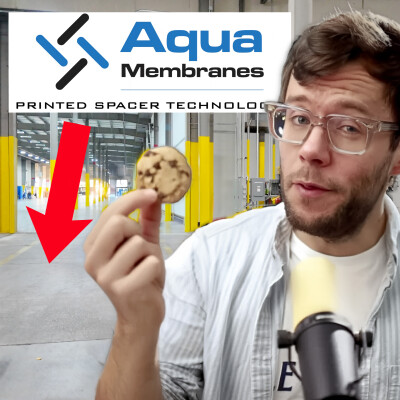Description
We think aout carbon emissions when we fly, not when we flush! Let me coin that phrase, which opens up my reflection this week on a water professional's carbon impact and the ways to mitigate it through deploying water technologies.
Let's dive into the heart of the water sector's role in CO2 emissions and explore innovative technologies that could drastically reduce our carbon footprint.
I share my personal journey of grappling with the guilt of my carbon emissions and how it led me to discover solutions far more effective than planting trees.
First, let's summarize Xylem, Cambi and Global Water Intelligence's findings on the Water Sector's Carbon Footprint. It surprisingly compares almost one to one in CO2 equivalent emissions with the aviation industry.
Then, let's explore 5 Carbon Mitigation Strategies in the Water Sector:
1️⃣ Leak Reduction - Discussing the impact of 126 billion cubic meters of lost drinking water annually and how pressure management can significantly reduce this loss and the associated carbon impact.
2️⃣ Smart Pumps: How optimizing pumps with AI and machine learning can slash energy use and CO2 emissions.
3️⃣ Biogas Enhancement: The potential of anaerobic digestion and thermal hydrolysis processes in wastewater treatment plants to produce biogas, replacing fossil fuels. (And what I used to do kind of wrong in that field)
4️⃣ Aeration Optimization: The role of AI in optimizing the activated sludge process, reducing energy consumption, and mitigating nitrous oxide emissions.
5️⃣ Advocacy and Policy Influence: The importance of regulations and incentives in driving sustainable practices in the water sector.
I'm closing on a personal touch, reflecting on the impact of the Water circus on the road twice a week all year long. It's great if the water sector compensates its emissions, but what if it didn't create them in the first place? Let's set ourselves on the path to 2050!
Bottom line; think critically about your own carbon footprint and the broader implications of everyone's daily water use. Let's all challenge conventional ideas and present an opportunity for water professionals and enthusiasts to contribute to a more sustainable future.
Additional Resources
Better understanding Methane emissions
Fighting Nitrous Oxide emissions in Wastewater Treatment
Cutting the Water Sector's carbon emissions in half (at no cost)
The potential of the Thermal Hydrolysis Process
Following my tracks on the IOT Use Case Podcast (together with Aerzen)
The full blog article on this week's episode covering the Water Sector's Carbon Impact
⬇️ In this Episode ⬇️
00:00 My 12-Ton CO2 Problem
00:50 The Superpower of Water Pros
01:40 Where do the Water Sector's CO2 emissions come from?
02:51 Water Technology n°1
06:26 Water Technology n°2
09:33 Water Technology n°3
12:43 Water Technology n°4
16:11 Water Technology n°5
19:15 Conclusion
Hosted on Ausha. See ausha.co/privacy-policy for more information.





